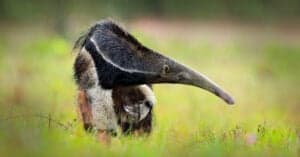Although puppies and kittens receive much of the spotlight when it comes to baby animals, some people claim that baby anteaters are just as cute! For what they lack in popularity, they more than make up for in individuality. Today, we’ll explore the lifecycle of anteaters and share some incredible facts about these unique and special animals.
Baby Anteaters: A Brief Overview
Anteaters are fully developed and able to mate once they reach around three or four years of age. At this time, a male will begin searching for females. Females will lift their tails to indicate their interest, and if a couple hits it off, the two will begin copulation. According to the Animal Diversity Web, “Gestation is approximately 190 days, after which females give birth to a single young which weighs about 1.3 kg…Breeding occurs year-round in captivity and the wild, though seasonal breeding times have been reported in portions of their range. Interbirth intervals can be as low as 9 months.” Baby anteaters, also called pups, are quite unique for a variety of reasons. Let’s dive into six fun facts about these quirky animals!
1. Baby Anteaters Ride Around on Their Mother’s Backs

Wild anteaters usually live to be around 15 years old, whereas those in captivity can live up to 25 years.
©Lucas Leuzinger/Shutterstock.com
Because anteaters have such long claws, they’re unable to grab or hold their young. Because of this, many baby anteaters spend their days riding around on their mother’s backs. Anteaters are solitary animals. They don’t often socialize with one another outside of mating purposes. For this reason, having a pup around can be one of the only times in an anteater’s life that they spend significant time around another of their kind. Baby anteaters stick with their mothers for about a year or two before they’re mature enough to venture out on their own.
2. Baby Anteaters Can’t Eat Ants for Awhile
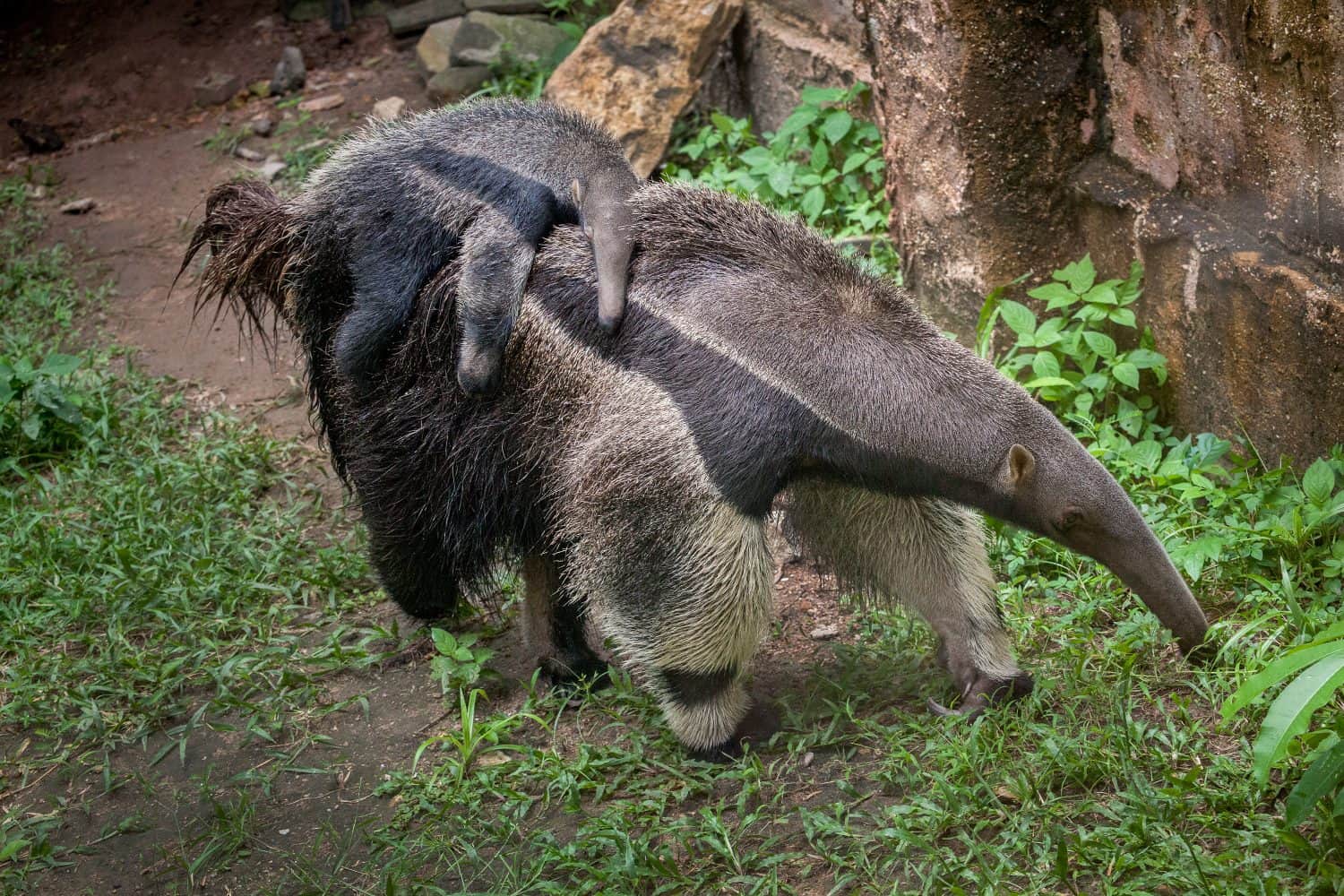
Anteaters are pregnant for roughly six months.
©apple2499/Shutterstock.com
Baby anteaters don’t come out of the womb ready to feast on an all-you-can-eat ant buffet. For about six months, pups get all their nutrients from their mother’s milk, before transitioning to a more ant and termite-based diet. As anteaters grow, their claws get stronger and longer, giving them the ability to rip apart logs and locate insects on their own.
3. Most Baby Anteaters Are Only Children
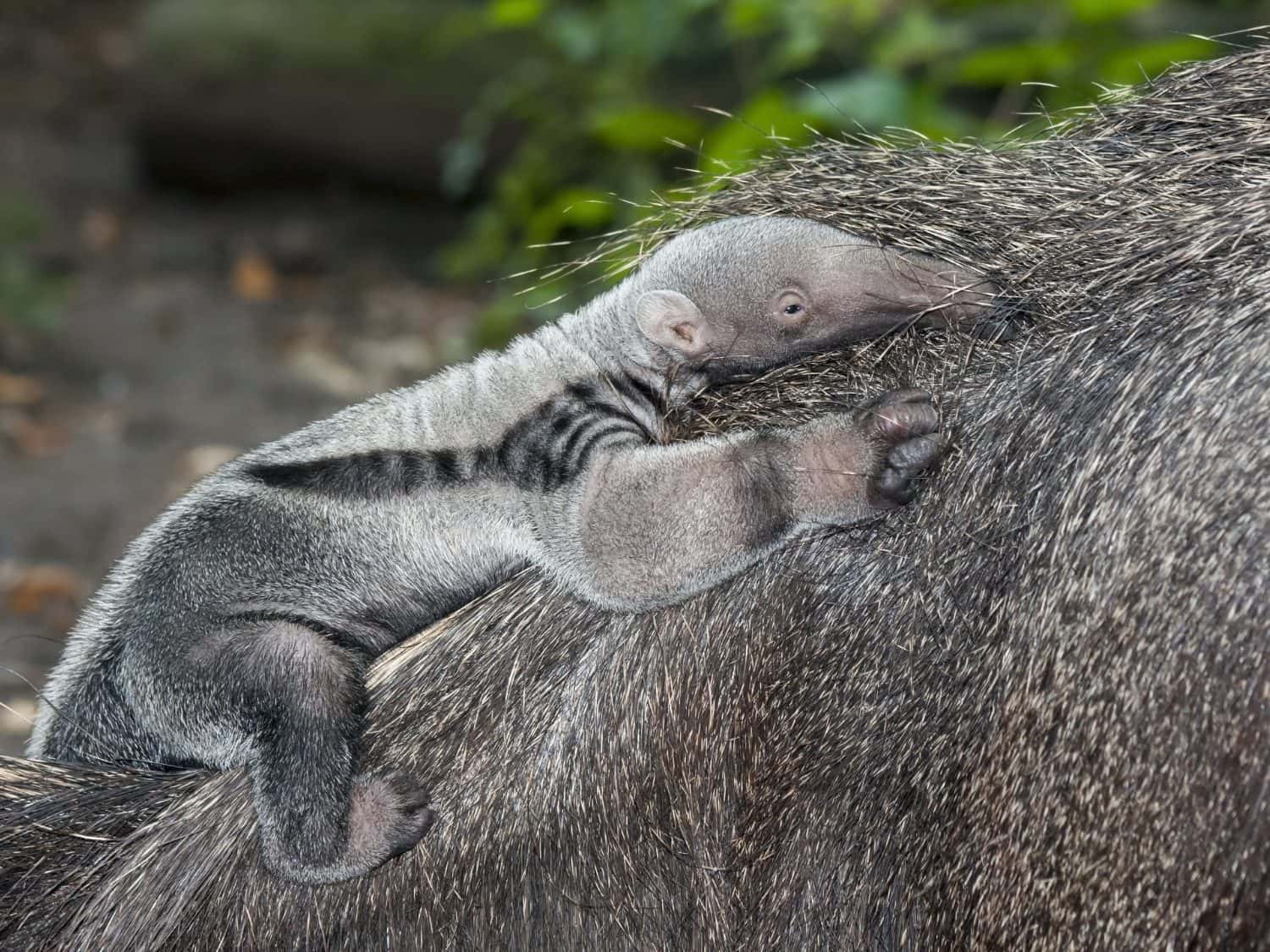
Some anteaters stick with their mothers until the age of two, while others choose to venture off sooner.
©belizar/Shutterstock.com
Unlike other animals, many anteaters will never know what it’s like to play with their siblings. However, being an only child comes with a lot of benefits for baby anteaters. For example, mothers are able to provide their pups with more specialized attention. This means that they get more milk, more snuggles, and of course, more room on mom’s back to hitchhike. Although twins are not unheard of, most anteaters only give birth to one baby at a time.
4. Baby Anteaters Lack Teeth
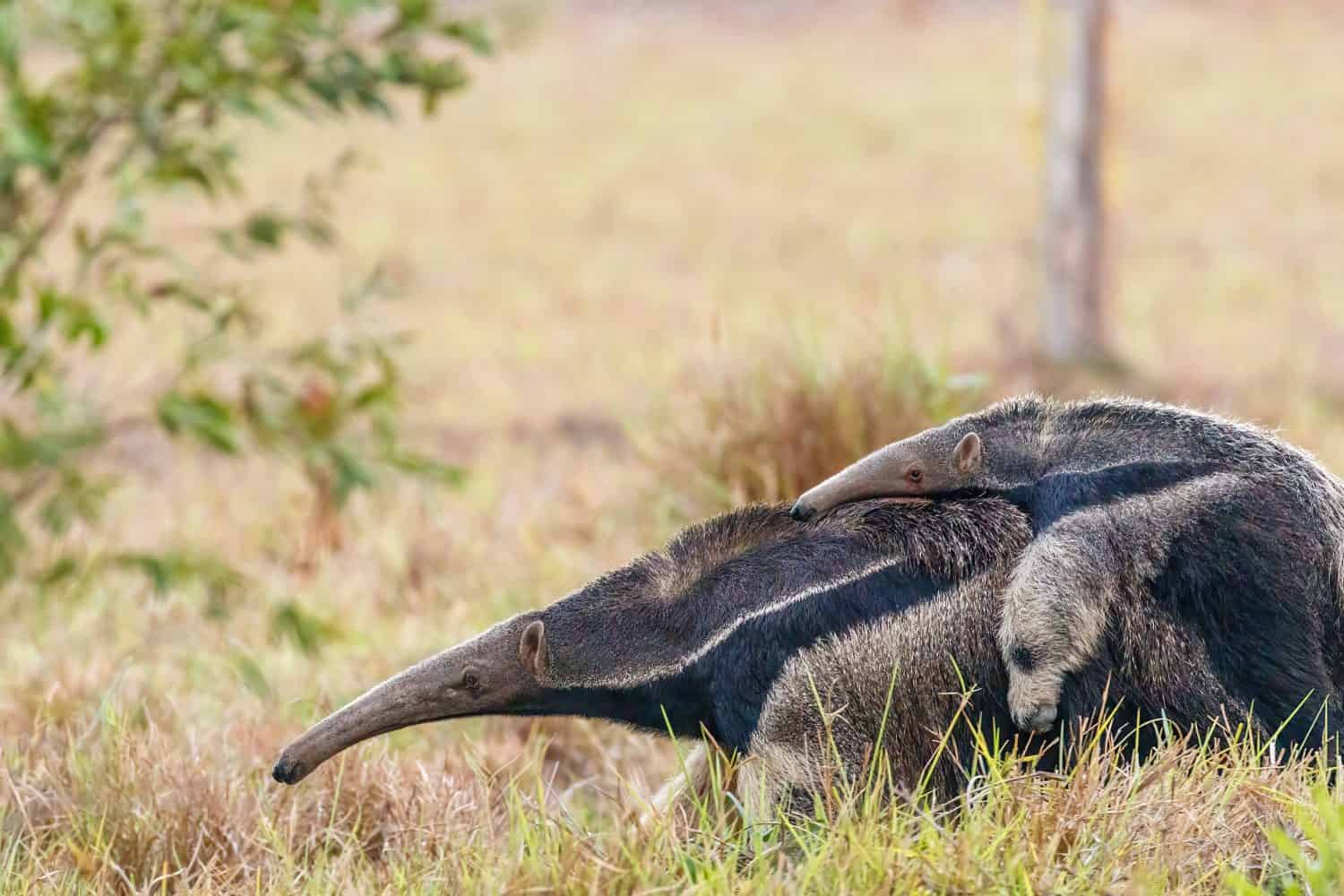
Baby anteaters are born with a full fur coat.
©Sekar B/Shutterstock.com
Yes, you read that right: baby anteaters don’t have any teeth. However, adult anteaters never grow them either! Anteaters are edentates, a term that means “without teeth.” According to the University of California Museum of Paleontology, “Members of the mammalian group Edentata not only include the 31 living species of armadillos, true anteaters, and tree sloths but also contain eight families of extinct ground sloths and armadillo-like animals.” However, the lack of teeth doesn’t impede the anteater’s ability to hunt or eat whatsoever. Their claws, noses, and long tongues do all the heavy lifting.
5. Giant Anteater Babies Are Rare
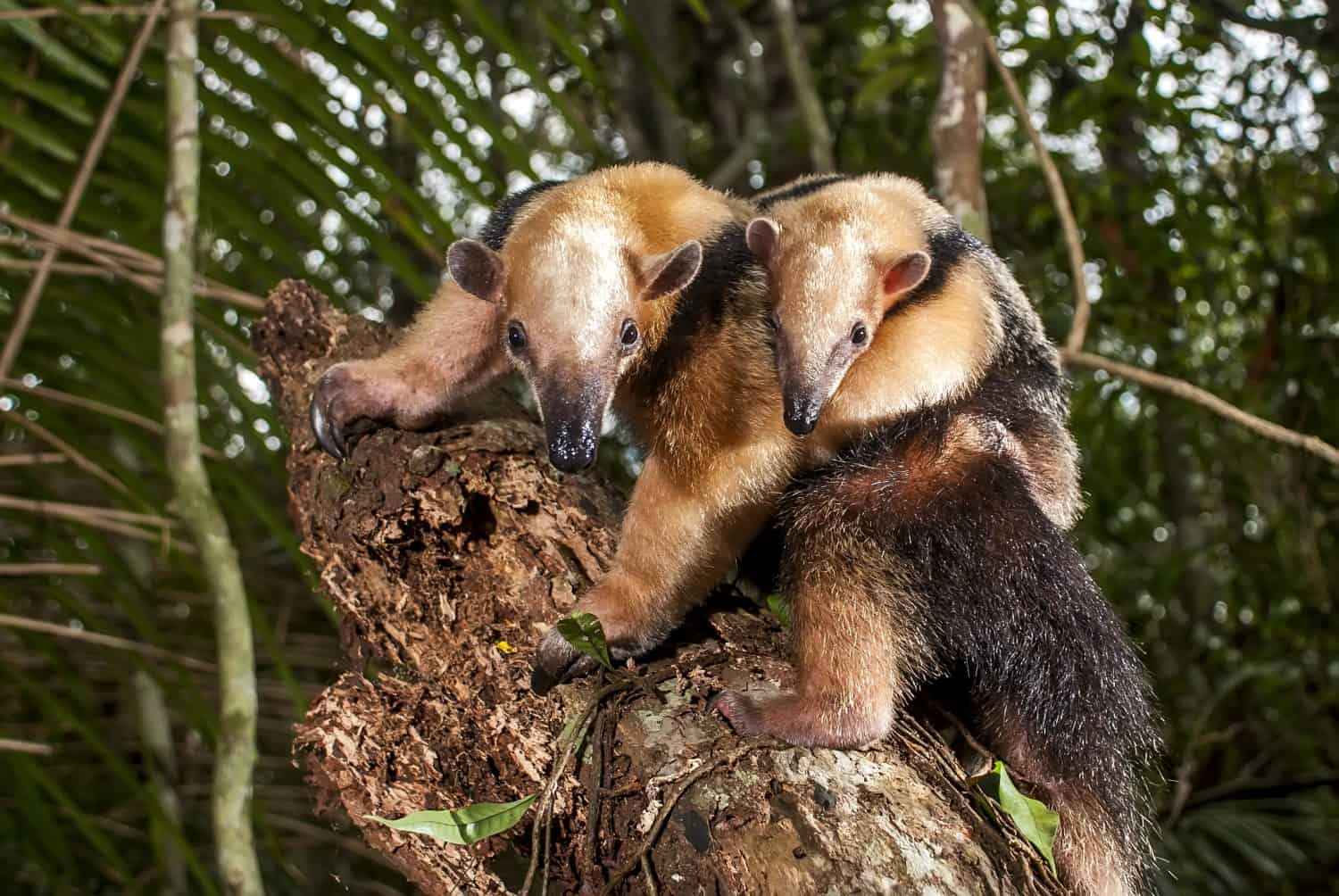
An
anteater
mother may experience difficulty caring for more than one pup at a time.
©Leonardo Mercon/Shutterstock.com
There are four different anteater species: silky anteater, northern tamandua, southern tamandua, and giant anteater. Among these, the giant anteaters are in danger of disappearing altogether. Currently, giant anteaters are classified as vulnerable on the IUCN Red List. They once roamed many countries in Central America, such as El Salvador, Guatemala, and Belize. However, their numbers continue to dwindle due to factors such as habitat loss, hunting, and rapid urbanization. Giant anteater babies are incredibly precious and rare, and it’s important that conservationists protect them at all costs.
6. Baby Anteaters Can Be Put On ”Pause” While Developing
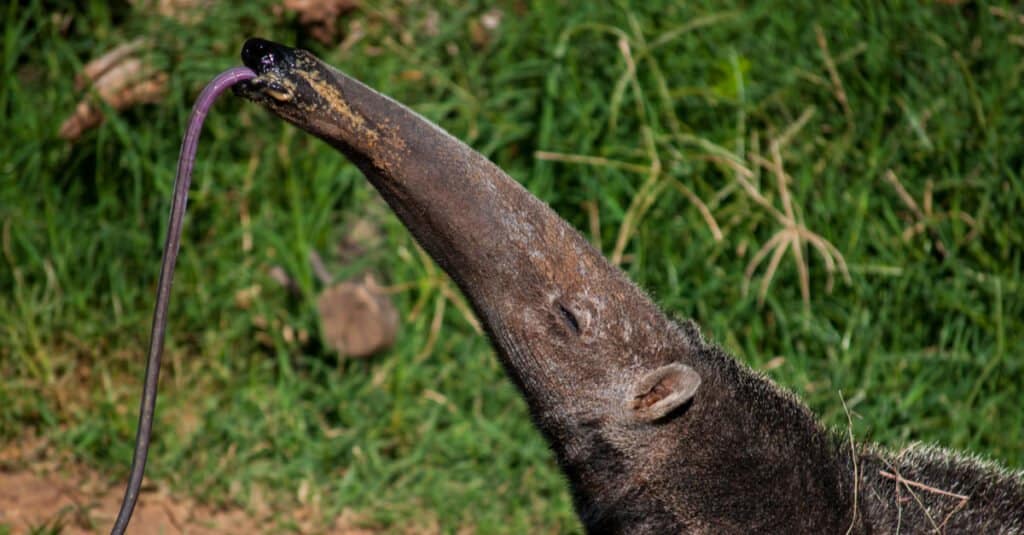
On average, a giant anteater’s tongue will grow to be about 2 feet long at maturity.
©esdeem/Shutterstock.com
About a decade ago, a female anteater named Armani living at the LEO Zoological Conservation Center in Connecticut found herself in the middle of a crazy controversy. Armani had just given birth to a female pup. After the birth, Armani’s male mate, Alf, was taken to a separate enclosure to ensure the pup’s safety. However, zookeepers were shocked to discover that Armani gave birth yet again to another pup a few short months later, this time a male. As Armani shouldn’t have been capable of conceiving without Alf, questions began to arise.
According to NBC News, experts believe that this surprise conception was actually a case of delayed implantation. Under certain conditions, anteaters are able to pause embryonic development. This was the first time this phenomenon was observed in anteaters, although it’s been recorded in the anteater’s close relative, the armadillo. Although it’s unclear whether this unique pause in development occurred in the case of Armani’s second baby, experts believe it could be plausible.
The photo featured at the top of this post is © belizar/Shutterstock.com
Thank you for reading! Have some feedback for us? Contact the AZ Animals editorial team.




